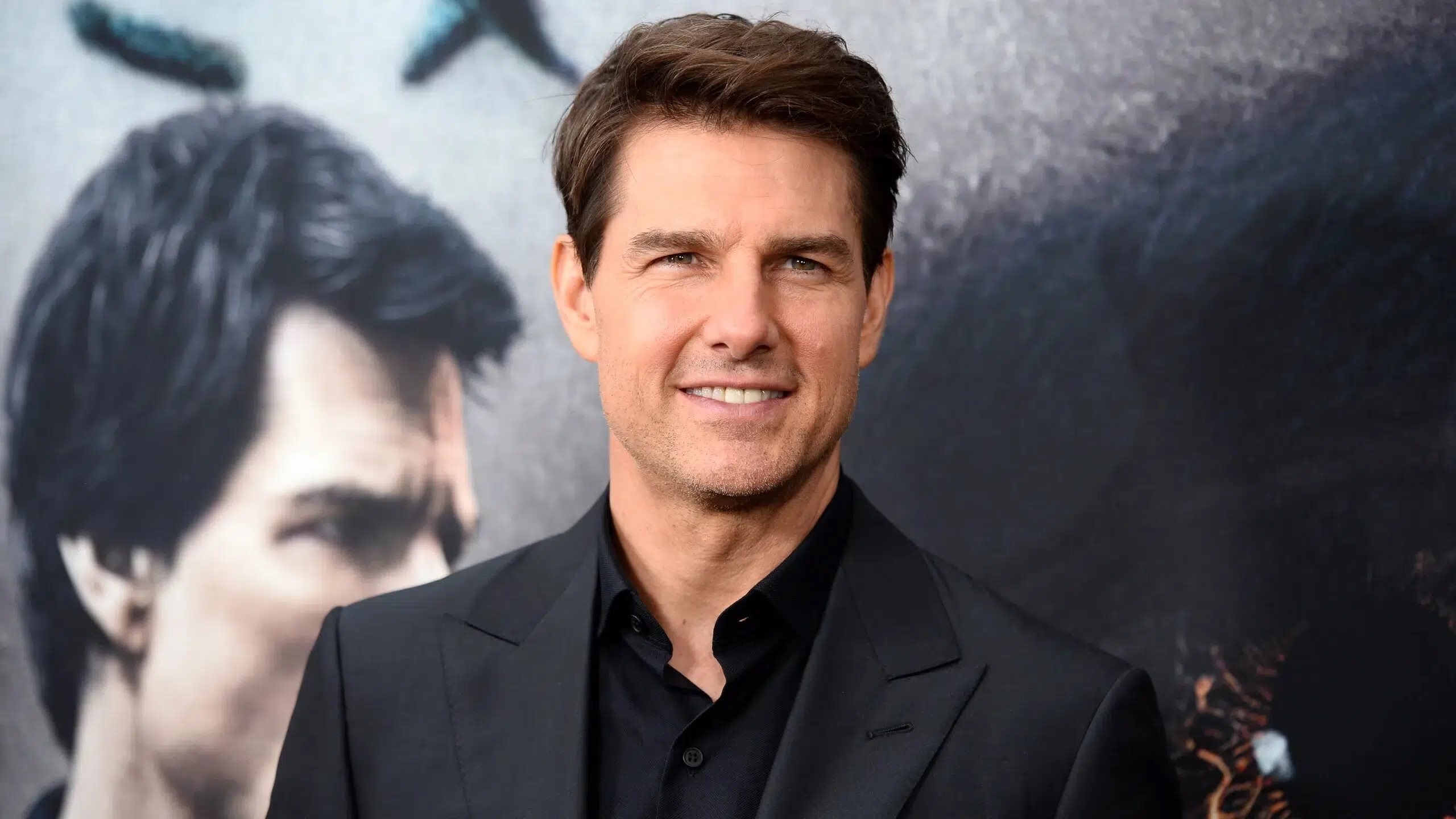In the ever-shifting firmament of Hollywood, where stars are born on a streaming series and forgotten by the next algorithm update, the constant, blindingly white smile of Tom Cruise presents a fascinating anomaly. He is not merely an actor; he is an institution. A brand synonymous with maximum effort, absolute commitment, and a seemingly anachronistic belief in the power of the cinematic experience. In an age of deconstructed heroes and relatable celebrities, Cruise stands as the last true movie star, a figure who exists almost entirely within the mythic landscape of the silver screen. His career is not a series of roles, but a decades-long mission to deliver the impossible, both on camera and off. This is not just a list of facts; it is a deep dive into the engine room of a phenomenon, an exploration of the man, the myth, and the relentless machine that is Tom Cruise.
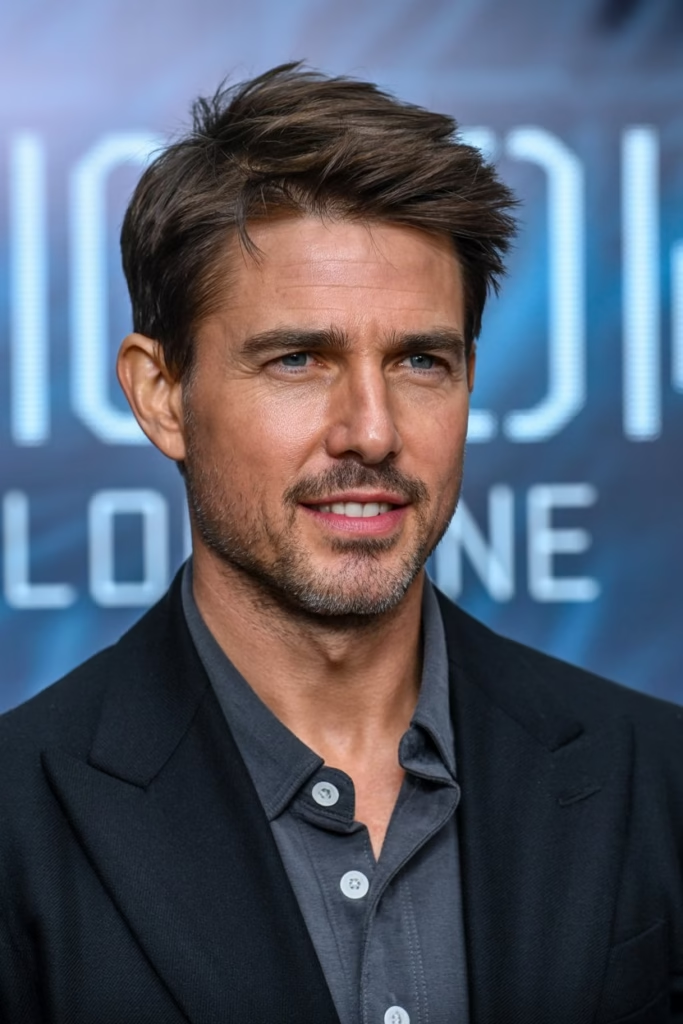
Part I: The Ascent – The Making of a Maverick
1. A Nomadic Beginning: The Roots of Resilience
Born Thomas Cruise Mapother IV on July 3, 1962, in Syracuse, New York, his early life was anything but stable. The fourth of seven children, his childhood was defined by constant movement and poverty. His father, Thomas Mapother III, was an electrical engineer described as a “bully” and “tyrant,” whose abuse cast a long shadow over the family. When his parents divorced in 1974, Cruise, then 12, became the man of the house, a role that forged in him a fierce sense of responsibility and a relentless drive to protect and provide. This foundational experience is the crucible in which the Tom Cruise persona was forged: the need for control, the distrust of chaos, and the unwavering belief that sheer willpower can overcome any obstacle.
2. The Accident That Changed Everything
Cruise’s initial ambition was to become a professional wrestler, a path that suited his athletic, compact frame. However, a high school knee injury shattered that dream. Forced to find a new outlet, he tried out for the school production of Guys and Dolls, landing the role of Nathan Detroit. The moment he stepped on stage, he was hooked. The applause, the control, the ability to command attention—it was a powerful antidote to the powerlessness of his youth. He later told Rolling Stone, “I knew I had to give everything I had. There was no other option.” This binary, all-or-nothing approach would become his trademark.
3. The 80s Breakthrough: From Brat Pack Adjacent to Leading Man
He dropped out of high school and moved to New York at 18, taking on menial jobs while auditioning relentlessly. His first film, 1981’s Endless Love, was a blink-and-you’ll-miss-it role, but it was his raw, explosive performance as the troubled military school cadet David Shawn in Taps (1981) that truly announced his arrival. Hollywood sat up and took notice of the intense young man with the piercing blue eyes.
The 1980s cemented his status as a generational heartthrob, but he was always more than that. In Risky Business (1983), he wasn’t just the guy in his underwear dancing to Bob Seger; he was the embodiment of suburban ambition and teenage anxiety, a capitalist-in-training. It was a star-making turn, but it was Top Gun (1986) that launched him into the stratosphere. As Lieutenant Pete “Maverick” Mitchell, he became the avatar of 80s American confidence—cocky, brilliant, and vulnerable. The film wasn’t just a hit; it was a cultural reset that boosted U.S. Navy applications by 500% and cemented Cruise’s association with death-defying stunts and iconic aviators.
4. The Dramatic Pivot: Proving His Mettle
Cruise, however, was shrewd. He knew heartthrob status was fleeting. He began to actively seek roles that would challenge his pretty-boy image. He fought for the part of Vincent Lauria in The Color of Money (1986), learning from the master, Paul Newman. He immersed himself in the world of pool hustling, demonstrating a commitment to craft that would become legendary. This was followed by his visceral, transformative performance as Ron Kovic in Oliver Stone’s Born on the Fourth of July (1989). Gaining weight, spending time with Kovic in a wheelchair, he delivered a performance of such raw, unflinching power that it earned him his first Academy Award nomination for Best Actor. The message was clear: Tom Cruise was not to be underestimated.
Part II: The Apex – The Master of His Craft
5. The 90s: A Decade of Dominance and Versatility
If the 80s were about building the star, the 90s were about proving its versatility. He seamlessly moved between genres, delivering one iconic performance after another.
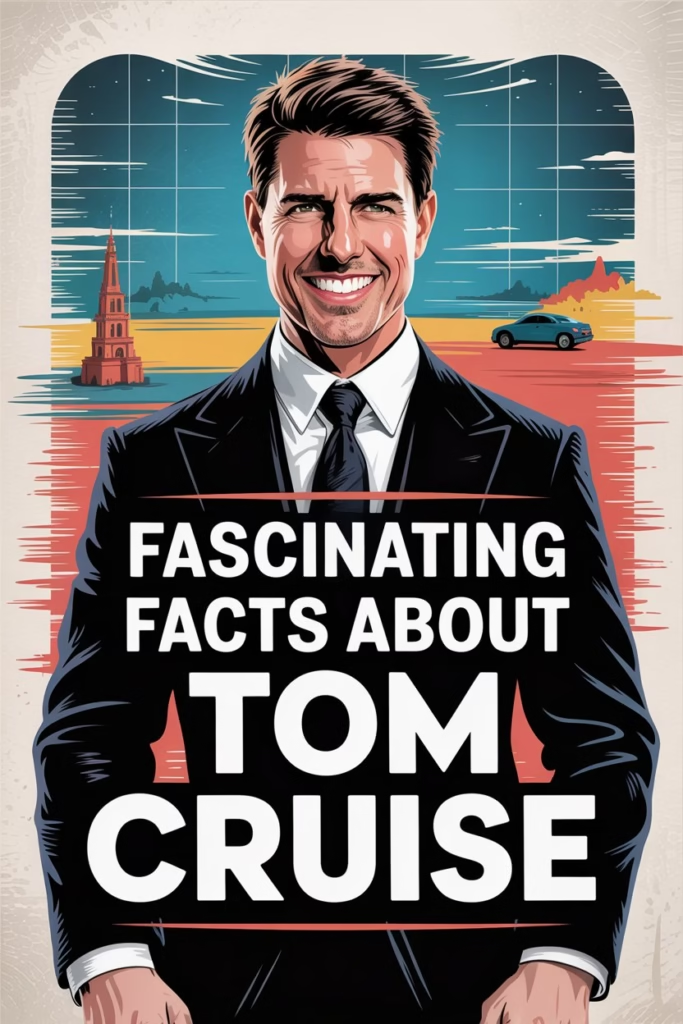
- The Legal Thriller: In A Few Good Men (1992), he held his own against Jack Nicholson in one of cinema’s most electrifying courtroom showdowns. His Lieutenant Kaffee was a lazy genius pushed to his moral and professional limit.
- The Gothic Horror: In Interview with the Vampire (1994), his casting as the vampire Lestat was met with fierce criticism from author Anne Rice. Yet, his portrayal—androgynous, cruel, and dripping with melancholy—was a triumph that forced Rice to publicly apologize and praise his “perfection.”
- The Action Star: Mission: Impossible (1996) was more than a film; it was a declaration. Not only did he star, but he also took over as producer, firing the original director and steering the ship himself. The now-legendary scene of him suspended by wires in the CIA vault became the franchise’s thesis statement: Tom Cruise will risk everything for your entertainment.
6. The Collaborator: The Cruise-Spielberg Synergy
His work with Steven Spielberg marked a creative high point. In Minority Report (2002), he was the perfect vessel for a futuristic noir, his character’s relentless pursuit mirroring Cruise’s own driven nature. In War of the Worlds (2005), he was not a superhero but a flawed, everyman father, and his terror felt real. These films showcased an actor at the peak of his powers, capable of anchoring massive, high-concept blockbusters with profound human emotion.
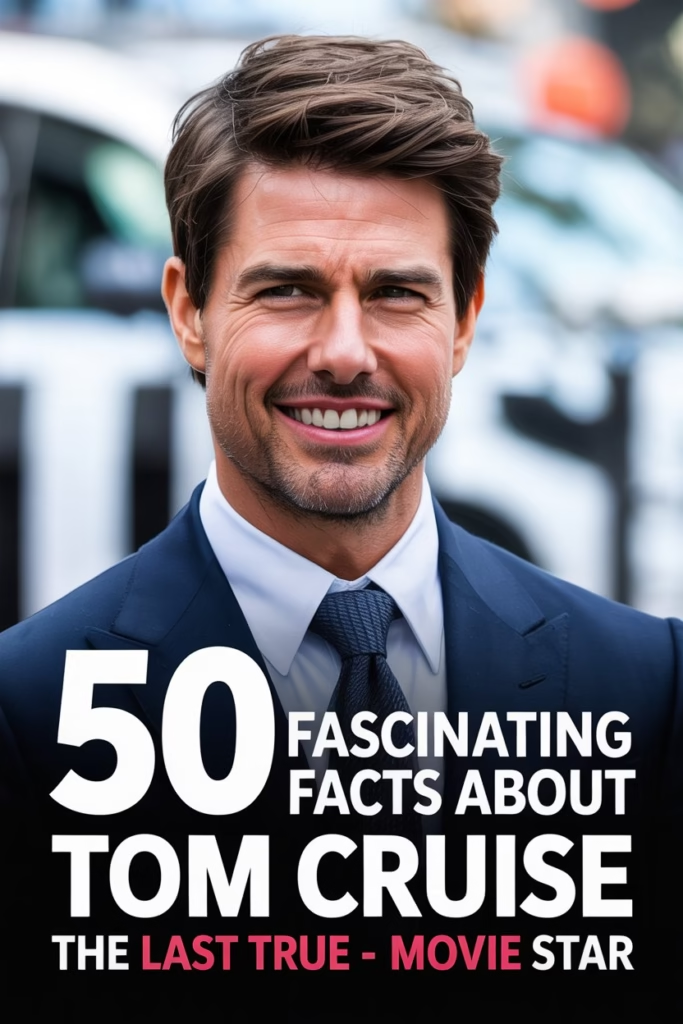
7. The Method and The Mania: A Commitment Beyond Reason
The stories of his preparation are the stuff of Hollywood lore. They are not anecdotes; they are tenets of the Cruise doctrine.
- For The Last Samurai (2003), he spent eight months training in the katana, horseback riding, and martial arts, immersing himself so completely in Japanese culture that his co-stars believed he had become a samurai in spirit.
- For Collateral (2004), he trained for months to become a proficient contract killer, spending time with FBI consultants and mastering the cool, economical movements of a predator. His grey-haired, wolf-like hitman, Vincent, remains one of his most critically acclaimed performances, a chilling departure from his heroic norms.
- For the Mission: Impossible films, the stunts escalated from impressive to borderline pathological. He learned to free-climb the Burj Khalifa, the world’s tallest building, for Ghost Protocol. He held his breath underwater for six minutes during a complex sequence for Rogue Nation. He performed over 100 skydives and 13,000 motocross jumps to execute the breathtaking HALO (High Altitude Low Opening) jump for Fallout.
This isn’t just dedication; it’s a philosophical stance. In an era of CGI, Cruise’s insistence on practical, “real” stunts is a powerful argument for authenticity. It’s a promise to the audience: What you are seeing is real. I am risking my life for you. Therefore, this story matters.
Part III: The Persona – The Man Behind the Smile
8. The Scientology Factor: The Unshakeable Foundation
It is impossible to discuss Tom Cruise without addressing his very public and devout affiliation with the Church of Scientology. He joined in the late 1980s, and it has since become the central organizing principle of his life. He has credited it with curing his dyslexia and providing him with the tools to navigate his chaotic childhood. To his critics, it is a controversial cult that has tarnished his image; to Cruise, it is the foundational truth that enables his success. His belief system provides him with an unshakeable certainty, a framework that explains his relentless drive and his belief in the limitless potential of the individual—the very themes that permeate his filmography.
9. The Personal Life: A Spectacle of Its Own
Cruise’s personal life has often played out like a blockbuster itself, complete with dramatic twists and relentless media scrutiny. His marriages to Mimi Rogers, Nicole Kidman, and Katie Holmes were dissected in the public square. The infamous “couch-jumping” incident on Oprah Winfrey’s show in 2005 became a cultural flashpoint, a moment that, for many, painted him as unhinged. His intense advocacy for Scientology and his very public breakup with Katie Holmes, which was orchestrated with military precision, further cemented the narrative of a man who was, in his private life, as controlled and intense as his on-screen personas.
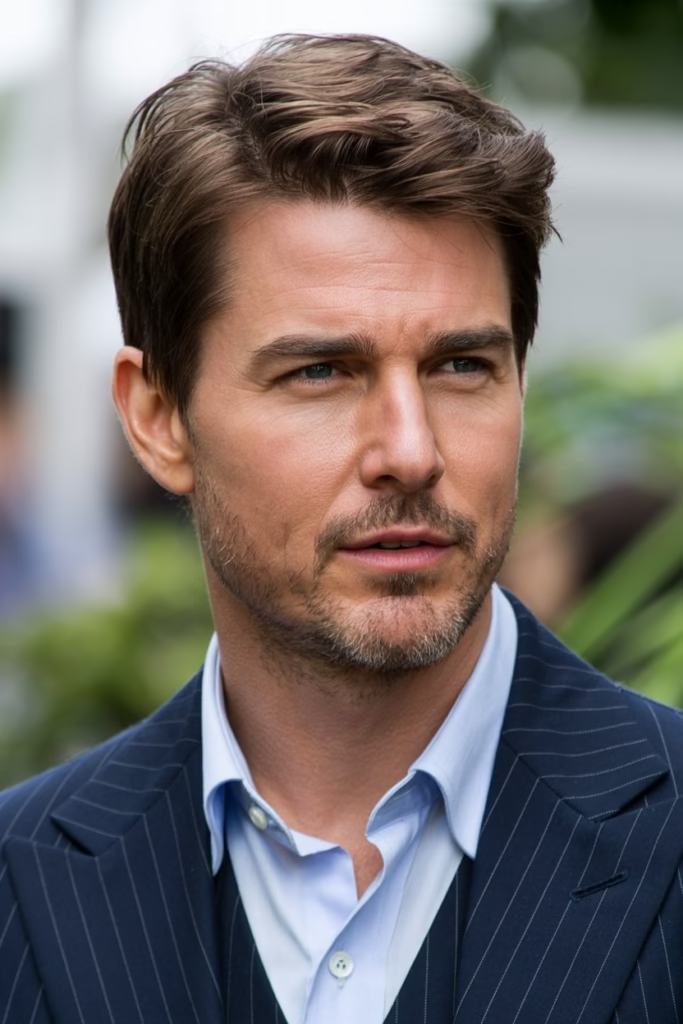
10. The Professionalism: The Antidote to the Scandal
Remarkably, his professional reputation has remained almost entirely untarnished. On set, he is known not as a diva, but as the hardest worker in the room. Countless co-stars and crew members have recounted stories of his generosity, his insistence on knowing everyone’s name, and his boundless energy. He sends birthday gifts, remembers family details, and leads by example. This dichotomy is key to understanding his endurance: while the public may question his beliefs, no one in Hollywood questions his work ethic or his commitment to making the best possible film.
Part IV: The Legacy – The Last Movie Star
11. The Top Gun Resurgence: A Masterclass in Career Management
Just as the industry was beginning to write him off as an action star past his prime, Cruise executed one of the most stunning career resurgences in modern cinema. Top Gun: Maverick (2022) was more than a sequel; it was a cultural event. Held back for two years during the pandemic, it was released with a mandate: see it on the biggest screen possible. The film was a love letter to practical filmmaking and old-school star power. Cruise, now playing the mentor, insisted the young cast undergo a grueling, three-month “boot camp” to actually fly in the F-18 jets. The result was a critical and commercial smash that grossed nearly $1.5 billion worldwide. It was a defiant statement: the movie star is not dead, as long as that star is Tom Cruise.
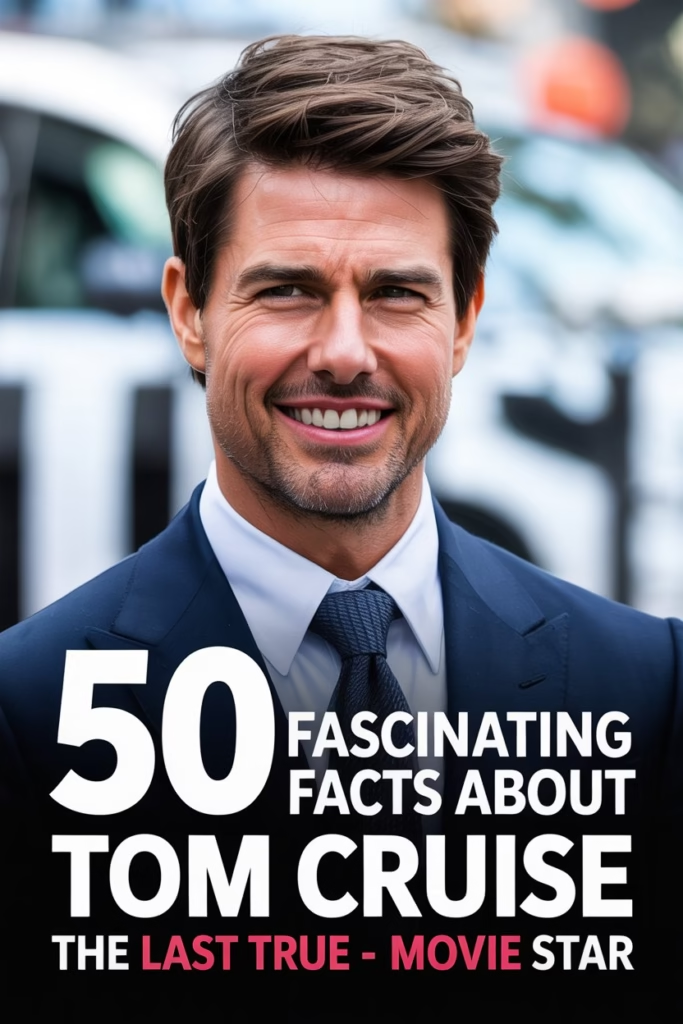
12. The Producer: Architect of an Empire
His role as a producer, primarily through his company with longtime producing partner Paula Wagner, is perhaps his most significant. He was one of the first major stars to understand the power of controlling his own intellectual property. By taking a backend deal on Mission: Impossible in exchange for a lower salary, he secured a piece of the franchise’s massive profits. This model has allowed him to amass incredible creative and financial control, ensuring that his vision is executed without studio interference. He is not just the face of his films; he is the architect.
13. The Guardian of Cinema
During the pandemic, while studios were funneling content to streaming services, Cruise became the most vocal and powerful advocate for the theatrical experience. Leaked audio of him berating his Mission: Impossible 7 crew for breaking COVID protocols was not about the protocols themselves, but about the responsibility to the audience and the thousands of theater owners whose livelihoods depended on them. He wasn’t just protecting his film; he was protecting an entire ecosystem. This stance, once seen as traditionalist, now looks prescient and principled.
14. The Unresolved Conclusion
Today, at an age when most of his contemporaries have retired or moved to prestige television, Tom Cruise is scaling cliffs, flying fighter jets, and base-jumping off motorcycles. He is simultaneously a relic of a bygone era and a visionary pointing toward a future where spectacle and authenticity merge. He is a paradox: a deeply private man whose life is public fodder, a man of controversial faith who preaches a universal gospel of hard work, and a superstar who operates like an underdog.
His story is not one of a flawless hero, but of a complex, driven, and often inscrutable individual who has, through sheer force of will, defined the parameters of global stardom for over four decades. He has not just survived the fickle tides of fame; he has commanded them. The fascinating facts of his life are not merely trivia; they are the chapters in the epic of the last true movie star, a man forever chasing the impossible, both for himself and for us. And as long as he keeps running, we will be there, in a theater seat, watching.
Career & Work Ethic
- The “Famously Known” Clause: It’s widely reported in Hollywood that Tom Cruise has a clause in his contracts stipulating that his run in a film cannot be depicted as clumsy or comical. He must always be seen as competent and in control, reinforcing his heroic image.
- The Mission: Impossible Genesis: Cruise didn’t just take the role; he actively developed the 1996 film as a star vehicle after the original TV series ended in 1973. He saw the potential for a modern, high-stakes spy franchise and fought for creative control.
- A Director’s Whim: The iconic shot of the splashing water hitting the lens in Mission: Impossible when the fish tank explodes was an accident. Director Brian De Palma liked it so much he kept it in the final cut.
- He Performed His Own Piano Piece: In Interview with the Vampire, the melancholic piece Lestat plays on the harpsichord was actually performed by Cruise himself, who learned it specifically for the role.
- The Tropic Thunder Surprise: His cameo as the foul-mouthed, bald-headed studio executive Les Grossman was so transformative that many viewers didn’t realize it was him until the credits rolled. He improvised much of his dialogue.
- A Realistic Injury: During the filming of the climax of Mission: Impossible – Fallout, Cruise broke his ankle while jumping between buildings. The take where he broke it remains in the final film. He got up and finished the shot, limping away, before collapsing.
- He Holds a Patented Smile: In 2005, Cruise was granted a patent (along with his then-wife Katie Holmes) for a “Media System for Isolating and Utilizing a Subjective Aura.” The complex-sounding patent was essentially for a system to project a personalized, ideal image of a celebrity (like his smile) to fans during events.
- The Edge of Tomorrow Suit Struggle: The exo-suits used in the film weighed between 85 and 125 pounds. The physical strain of wearing them and performing action sequences was so intense that it became a central part of the film’s theme, mirroring his character’s grueling experience.
- He Insisted on a Practical Set for Oblivion: For his 2013 sci-fi film, Cruise and director Joseph Kosinski built the glass house atop a mountain in Iceland as a full-scale, practical set rather than a CGI creation, believing it would ground the film’s futuristic story in reality.
- A Top Gun Requirement: For Top Gun: Maverick, the US Navy would only grant the production access to its aircraft and carriers if the film portrayed the Navy in a positive, recruitment-friendly light, just like the original.
- He Learned to Fly for American Made: For his role as real-life drug smuggler Barry Seal, Cruise got his pilot’s license for single-engine airplanes and performed many of the aerial maneuvers himself.
- The Magnolia Inspiration: Director Paul Thomas Anderson wrote the part of misogynistic self-help guru Frank T.J. Mackey specifically for Cruise after being fascinated by his intense, controlled public persona.
Personal Life & Background
- He Has Irish Citizenship: Through his marriage to Nicole Kidman, Cruise applied for and was granted Irish citizenship. He held an Irish passport for many years, separate from his American citizenship.
- A Former Seminary Student: Before acting, a young Tom Cruise spent a year in a Franciscan seminary, contemplating becoming a priest. He left after being expelled for stealing some gooseberries.
- He’s a Licensed Commercial Pilot: Beyond just flying for films, Cruise is a fully licensed commercial pilot and owns several aircraft, including a vintage P-51 Mustang fighter plane from World War II, similar to the one seen in Top Gun: Maverick.
- The Origin of “Cruise”: His stage name comes from his great-grandfather, Thomas Cruise O’Mara, who changed his last name from O’Mara to Cruise.
- He Was a High School Wrestler: Before his knee injury, Cruise was a standout wrestler at his high school in Glen Ridge, New Jersey, demonstrating the athletic competitive drive that would define his career.
- He Doesn’t Drink Alcohol or Coffee: A dedicated adherent to Scientology, Cruise abstains from all psychoactive substances, including alcohol and caffeine.
- A Near-Miss with Rain Man: The role of Charlie Babbitt was originally written for him, but he dropped out over creative differences. The part eventually went to Tom Hanks, who also dropped out, and then to Dustin Hoffman, with Cruise taking the supporting role as the brother.
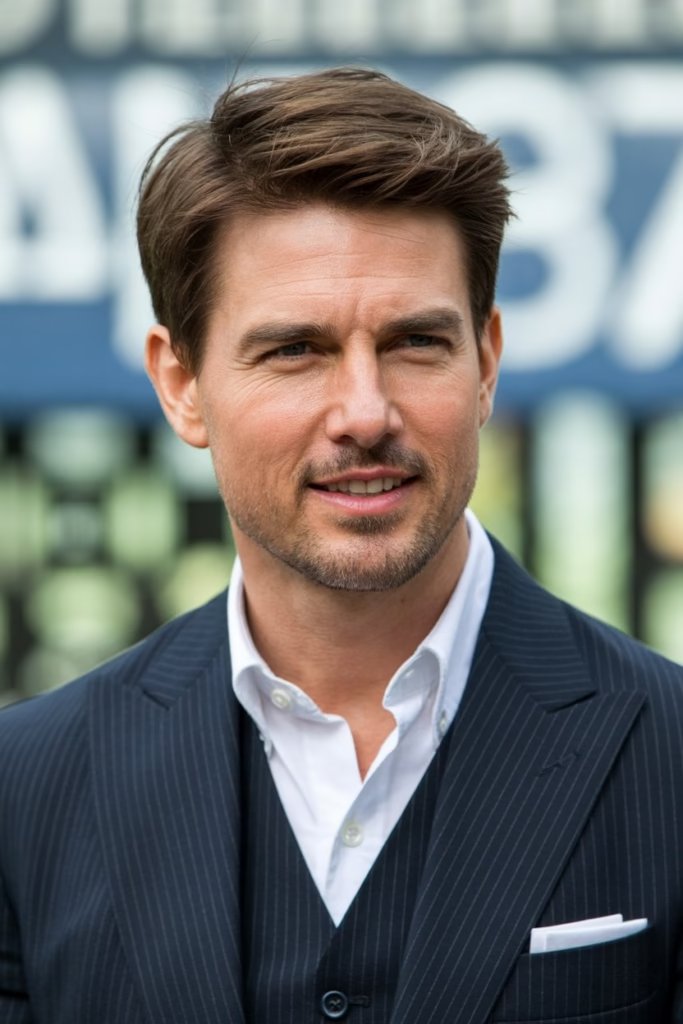
- He Performed His Own Stunts as a Vampire: For Interview with the Vampire, he insisted on doing the wire work himself, including the scene where Lestat is thrown through a window.
- He Has a Fear of Boredom, Not Heights: Despite his death-defying stunts, Cruise has stated that his only real fear is boredom, which is a primary driver behind his constant need for new challenges.
- He Was Almost Tony Stark: In the early 2000s, Cruise was attached to produce and potentially star in a film adaptation of Iron Man. While he ultimately didn’t take the role, his development work is credited with helping get the project off the ground.
- He Sent a Fake Mission: Impossible Script: To maintain secrecy for Mission: Impossible – Ghost Protocol, the production sent out a fake, more mundane script to the majority of the cast and crew, with only a handful of key people knowing the real plot.
- He Learned to Throw a Knife in Two Days: For a brief but memorable scene in The Last Samurai, Cruise’s character throws a knife into a wooden post. He trained intensively for two days to make the throw look authentic and performed it himself on camera.
- A Generous Co-Star: For The Last Samurai, he gifted all the principal Japanese cast members with personalized, high-quality swords at the end of filming as a sign of respect.
- He Was Bullied Relentlessly as a Child: Due to his dyslexia and his family’s constant moving, Cruise was a frequent target of bullies, which he has cited as a reason for developing his tough, resilient exterior.
- He Has a Black Belt in Jiu-Jitsu: He has trained in various martial arts for decades and holds a black belt in Brazilian Jiu-Jitsu under the renowned Gracie family.
- The Eyes Wide Shut Record: His film with Stanley Kubrick and then-wife Nicole Kidman holds the record for the longest continuous film shoot in history, lasting over 400 days.
- He Personally Scouts Locations: As a producer, Cruise is deeply involved in all aspects of his films and often travels the world himself to find and secure the perfect locations for his stunts and set pieces.
- He Perfected the “Cruise Run”: His specific, arms-pumping, intensely focused running style is so iconic it has been studied by running coaches and parodied countless times. He considers it a crucial visual tool for conveying urgency and determination.
- He Was a Member of the Screen Actors Guild Board: Early in his career, from 1986 to 1990, Cruise served on the SAG Board of Directors, showing an early interest in the business and politics of Hollywood.
- A Near-Fatal Stunt in Mission: Impossible 2: During the opening rock-climbing sequence, a rock the size of a small car came loose and nearly crushed him. He managed to scramble out of the way just in time.
- He Learned to Sail for Far and Away: For his 1992 film with Nicole Kidman, Cruise learned how to sail a 19th-century ship, performing many of the maneuvers himself on the open water.
- He Has a Recurring Role in the “Star Cinema” Universe: A fictional movie studio called “Star Cinema” appears in the background of many of his films, including The Firm, Interview with the Vampire, and Jerry Maguire, as an inside joke.
- He Personally Tested the Burj Khalifa Harness for 6 Months: Before dangling from the world’s tallest building, Cruise and his team spent half a year testing and retesting the custom-built harness system to ensure it was absolutely fail-safe.
- The “Tom Cruise” Laugh: Directors often note that one of the hardest things for Cruise to do on camera is a genuine, hearty laugh. He is so focused and driven that letting go for a spontaneous laugh is a unique challenge he consciously works on for his roles.

